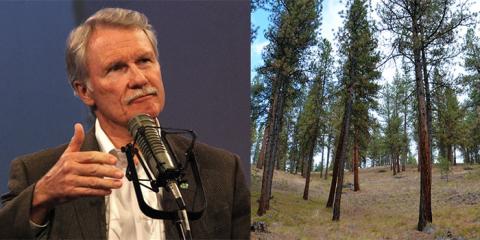Governor adds voice as eastside forest ally
January 22, 2013
Eastsiders like to protest that they are ignored in Portland and Salem, and there’s probably more than a skosh of truth to the lament. Yet that wasn’t the case in early January, as Grant County and the dry eastside forests got a strong plug from Gov. John Kitzhaber.
Speaking to the Oregon Board of Forestry on Jan. 9, the governor made a pitch for more active management of our federal forests.
“The status quo is not working,” Kitzhaber said. He made it clear that the board, while it has no direct authority over the federal lands, should use its voice and its political clout to effect change. He noted that there are interrelated decisions to be made regarding state and federal forests, offering an opportunity for “clear and pragmatic statements” to lead other policymakers in the right direction.
Kitzhaber also said he’s proposed state resources to accelerate the collaborative efforts on the dry forests and the pace of restoration. Noting that the state’s participation could serve as a catalyst, he urged the board to use its influence to maintain that investment and “get us off the dime over there.”
He pressed the need home by noting the elephant in our living room: wildfire. He was spot-on when he noted that the dry forests will always be “places of fire,” but that the impacts need not be so catastrophic if we are allowed to improve the state of the lands. Using a health-care analogy – once a doc, always a doc – he asked what makes more sense: spending pennies to manage someone’s blood pressure in the community, or spending a fortune for hospital care after that person has had a stroke?
In short, he was singing our song – that we can make the federal forests more resilient through active management. And he stressed his belief that Oregonians can lead the discussion, even if the lands are federal.
In Grant County, this is the kind of discussion that has been under way for some time, but it was gratifying to hear it coming from the governor. He has plenty of interests competing for his support; it’s significant that he is using the bully pulpit – and not for the first time – to tout the needs of the dryside forests and their communities.
And the show of support couldn’t come at a better time, as the Malheur National Forest works to ramp up timber sales and restoration work, including the new 10-year stewardship contract discussed in meetings last week. Locally, critics worry that these efforts won’t be enough, or fast enough, but this does represent a major change from the patterns of the recent past. If not a template, this is a starting point for more comprehensive restoration and recovery.
The efforts of local people – citizens, industry, elected leaders – brought us to this moment. As the work proceeds, it certainly doesn’t hurt to have the state’s top elected official in our camp. It’s significant that the governor not only is aware of the plight of rural forest communities, but is taking an activist stance and encouraging the state Forestry Board to take a more active role.
If collaboration is the way to a better future in the forests, and we believe it is, these are pretty potent allies to add to the mix.
Blue Mountain Eagle, Jan. 15, 2013
Scotta Callister, Editor, Blue Mountain Eagle
Reprinted by permission.
